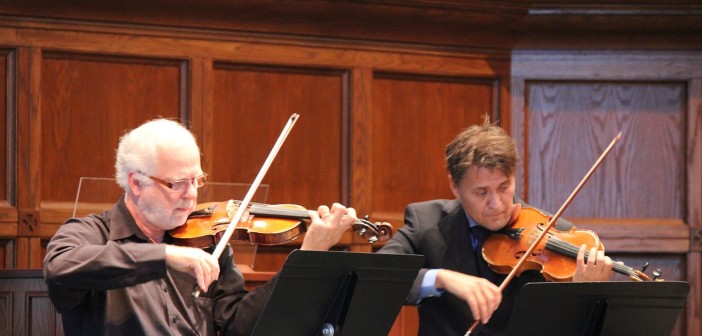Margaret Marcuson discusses the tension between individuality and togetherness for church leaders using the metaphor of a string quartet.
Leaders straddle the tension between togetherness and individuality. We want to follow our unique direction as leaders. Yet we need to be connected to the group we lead, and to be accepted.
The way a musical group plays together can exemplify this balance. Take, for example, the Grammy-winning Emerson String Quartet, one of the world’s foremost chamber ensembles. The quartet’s four members have been together since 1979. The group’s violinist, Eugene Drucker, attributes the group’s longevity to “the ability of each member to assert himself, the ability to listen to the others, and a sense of humor to keep everything in perspective.” These same qualities can help pastoral leaders as they face challenges in their own congregations.
Clergy leaders must know who they are and what direction they want to go, and express that vision clearly. But that is not enough. As Drucker notes, the ability to listen to others is also critical. Remaining in touch with our followers, and being able and willing to listen to them, constitutes the other piece of the leadership challenge.
In my ministry at First Baptist Church of Gardner, Massachusetts, I felt it was critically important to follow up personally with worship visitors. Church leaders, with their New England reticence, felt it was “too pushy.” I decided to step back and not be too pushy myself. But I kept paying attention to where I wanted to go and where the congregation was. When I brought up the issue again, some of the same people who had thought it was “too pushy” volunteered to visit our visitors. A number of people joined because of that ongoing effort.
Pastoral leaders walk a tightrope: too close to their followers and they are unable to provide direction, and too far away, they move out of range of their followers. It is easy to fall off the tightrope on the side of togetherness, to be pulled into the way things are in a church and the easy camaraderie of the group. It can be just as easy to fall off on the vision side – with clarity about where they want to take their congregation but losing sight of the importance of relationships.
It is important to stay in touch with key leaders. At First Baptist Church I kept track of church leaders and when I had talked to them. Especially when things got a little bumpy, I called just to say hello, or to talk about Red Sox baseball or their trip to Florida. Relationship building is not always task-related.
Clergy need to find the balance between individuality and togetherness for themselves, and also encourage others to do the same. In the quartet, Drucker observes, “Each one of us tries to be himself as much as possible, and with certain efforts to coordinate our approach, we hope that the group ‘product’ comes out in a more or less unified way, with enough leeway for each individual to express himself.”
Ministry is more likely to move ahead effectively and creatively when pastor and parishioners are given space to “be themselves.” This does not mean that anything goes. Certain expectations are part of the fabric of community life. The Emerson Quartet, for instance, does not play four different pieces of music at once. Each member must show up for rehearsals and for concerts as agreed. In the same way, church members must share the faith of the community. They need to have a clear reason for belonging to that particular church, and join in the church’s mission. But within certain parameters, allowing group members as much freedom as possible will lead to more creative and life-giving results.
Understanding and embracing one’s role and responsibilities is essential to effective, interactive leadership. Guided by the principle of equality, the Emerson Quartet exercises joint leadership. This means, according to Eugene Drucker, “that each person takes responsibility for his own role, for how he will play any solo passages, though we’re all open to suggestions from others.” As pastors take responsibility for their own role — for their own “solo passages” as a leader — and encourage others to do the same, chances are their longevity in ministry and the health of their congregations will increase.
Conflict is an inevitable part of group life, among musicians and in the church. The Emerson Quartet has learned not to push too hard when there is a musical disagreement. Their repeated performances provide opportunities to try out competing ideas, and according to Drucker, there often is an “unconscious evolution” toward compromise, even when compromise is not the explicit goal.
Flexibility can bring vitality and new possibility. A healthy congregation will make room for differing points of view, without anxiety or the felt need for a quick resolution. A sense of mutual respect for each other and varying perspectives goes a long way in congregational life.
Finally, a sense of humor can add immeasurably to a pastor’s ability to stay balanced on the leadership tightrope. This does not mean ministers must be stand-up comedians. But pastoral leaders can benefit by not taking themselves too seriously, by not focusing too much on petty setbacks, by having a lighter attitude even in the face of huge challenges.
Staying connected is key to playing in tune!







